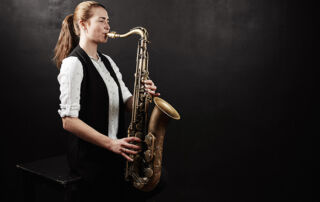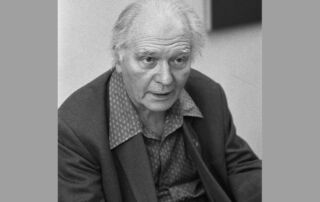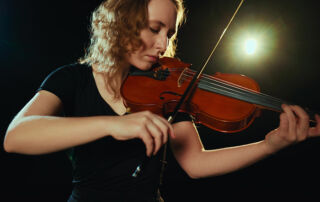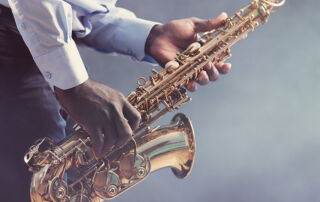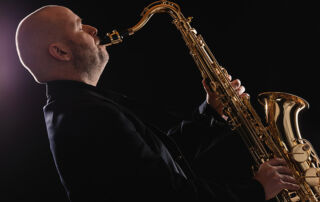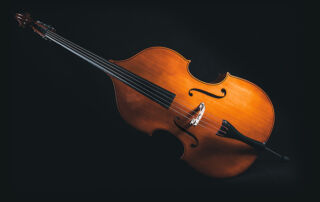
Photo: "Photograph of Maria Callas in 1958 from the television programme Small World, presented by Edward R. Murrow" by CBS Television. Licensed under Public Domain.
Maria Callas
Born in New York in 1923 Maris Callas is of Greek origin.
From the age of eight, she took her first singing lessons at the Washington Heights music school and gave her first recitals at the age of ten.
In 1936, following her parents' separation, the young girl returned to Greece with her mother and sister. She then enrolled at the Greek National Conservatory and later at the Athens Conservatory, before making her stage debut in 1941.
But after the Liberation, her desire to return to her native country prevailed. It was at this time that she adopted the stage name Mary Callas, which became Maria Callas on her passport upon her arrival.
She made her debut at 17, and her career took a decisive turn when she met the conductor Tullio Serafin, who offered her *La Gioconda* at the Verona Arena in 1947.
Surrounded by the most remarkable artists, Maria Callas performed on the world’s greatest stages (New York, London, Paris, Milan, Venice, Rome).
Retired from the stage from 1970 due to health reasons, she dedicated herself to directing singing masterclasses.
From 1974 onwards, she withdrew to her Paris apartment on Avenue Georges-Mandel, sinking into solitude and endlessly listening to her recordings.
She died in 1977 in solitude.
The cause of her death remains a mystery to this day: while the official reason is a heart attack, it is likely that she committed suicide by taking a massive dose of tranquilisers.

Photo: "Portrait of the Spanish soprano Montserrat Caballé. Milan, 1971" by Unknown (Mondadori Editions). Licensed under Public Domain.
Montserrat Caballé
Nicknamed "La Superba" for her technique, breath control, vocal range, and nuances, she is renowned for her interpretations of the bel canto repertoire.
Born in 1933 in Barcelona to a modest family, Maria de Montserrat Caballé i Folch She studied piano at the Liceu Conservatory in Barcelona and, with the support of a family of industrialist patrons, continued with vocal studies.
She made her professional debut in 1956 in La Bohème by Giacomo Puccini at the Basel City Theatre.
In 1959, she was hired by the Bremen Opera, where she performed a very broad repertoire of lyric-dramatic soprano roles, though she had not yet fully developed her true vocal identity.
Her reputation grew with notable performances at the Vienna Staatsoper and La Scala in Milan.
In 1962, she returned to Barcelona, where she made her debut at the Gran Teatre del Liceu.
Montserrat Caballé's first international success came in 1965 when she replaced Marilyn Horne, in a concert version of Lucrezia Borgia at Carnegie Hall in New York.
In 1972, she made her debut at La Scala and the Royal Opera House in Covent Garden. From that time onwards, she systematically explored the repertoire of romantic bel canto.
In 1973, she was awarded the Gold Medal for Merit in Fine Arts by the Ministry of Education, Culture, and Sports.
After the mid-1980s, due to fragile health, Montserrat Caballé was forced to reduce her appearances and step away from La Scala.
Her popularity with the general public increased when she performed the song Barcelona with the rock singer Freddie Mercury in 1987.
She passed away in 2018 in Barcelona at the age of 85.

Photo: "Enrico Caruso, 1873–1921, Italian tenor" by CBS Television. Licensed under Public Domain.
Enrico Caruso
Born in Naples in 1873, he is considered one of the greatest opera singers of all time.
Raised in Naples in a family of seven children, he first sang in his parish choir.
Like his father, at the age of 10, he began working as a mechanic, then as a labourer in a textile factory, spending his free time performing popular songs in the city's restaurants.
In 1895, Caruso made his debut in L’Amico Francesco, an opera by Domenico Morelli. There, he was noticed by impresarios and was quickly offered his first roles.
In 1898, Caruso premiered Fedora, an opera by Umberto Giordano, conducted by the composer himself. The performance was a great success, and Caruso was inundated with new contract offers.
His stage experience and additional singing lessons allowed him to progress further, and in 1900, Toscanini hired him to perform in La Bohème at La Scala in Milan.
His voice earned him a reputation that transcended borders. Caruso sang at Covent Garden in 1902, gave concerts in the United States, and even performed without a microphone at Yankee Stadium in New York.
He was one of the first stars of phonographic recording, which brought him recognition from a much wider audience.
His first recording was made on a gramophone in 1902 in a hotel room in Milan. Many more followed, with a total of 488 records known today.
"His recordings made Caruso a universal model for generations of tenors, and his reputation played a major role in the social and economic success of the phonograph," wrote The New York Times.
Caruso's American concerts marked the pinnacle of his career.
Caruso continued his career but increasingly suffered from health problems related to smoking.
To escape the war, he embarked on a tour of South America from 1917 to 1919, participating in a fundraising campaign for the Allies.
His health worsened from 1920 onwards, and he injured his left kidney during a performance. He then returned to Naples, where he died of sepsis in 1921 at the age of 48.

